The Neophemas are a family of 6 dainty and strikingly beautiful parrots, endemic to Australia. Along with grasswrens, they are (or at least, used to be) one of the principal birding reasons to visit South Australia, because all but one was regular in the state.
Prior to moving to Adelaide I had seen only Rock Parrot. Mainly olive-green with a blue forehead stripe and blue lores, it is the dullest and most widely spread of the family. They are strictly costal birds and I had seen and photographed them at Cape Leeuwin lighthouse in WA way back in 2009 while on a family holiday in the south-west. They are not easy to find, and the ones on the lawn at Leeuwin lighthouse seem to be amongst the easiest. Subsequently in autumn 2015 I added Rock Parrot to my SA list on a trip to the Murray Mouth lookout on Hindmarsh Island, but I dipped at Innes National Park on the Yorke Peninsula in spring 2017; in SA the can be tricky to find!

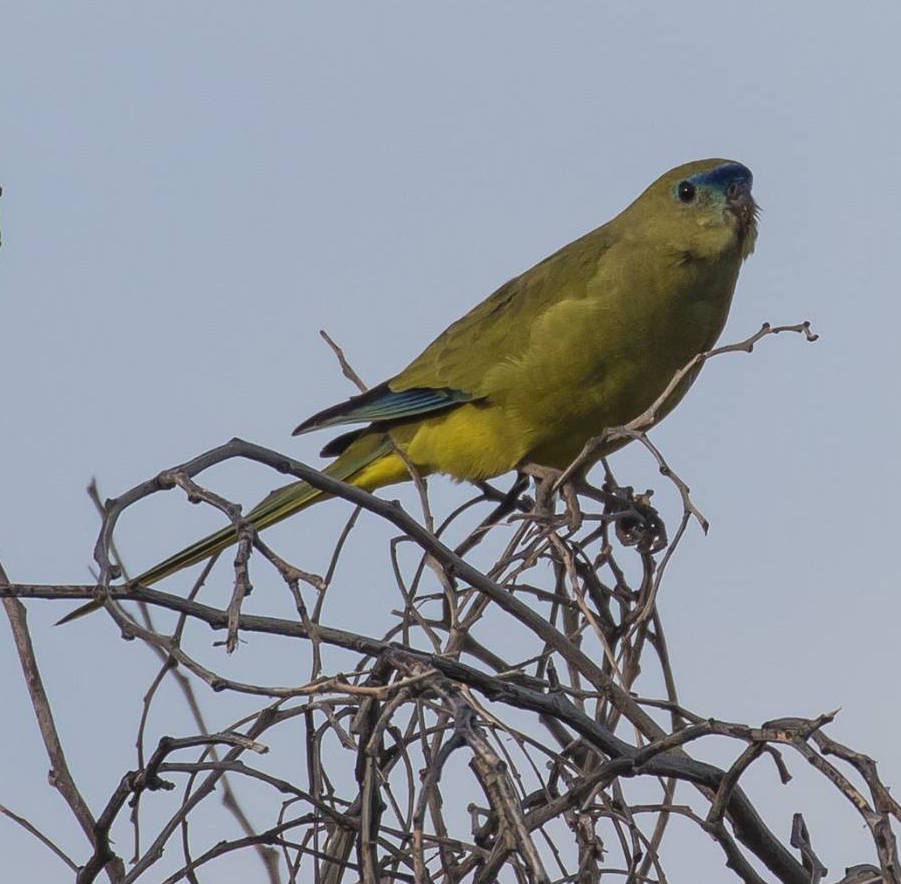
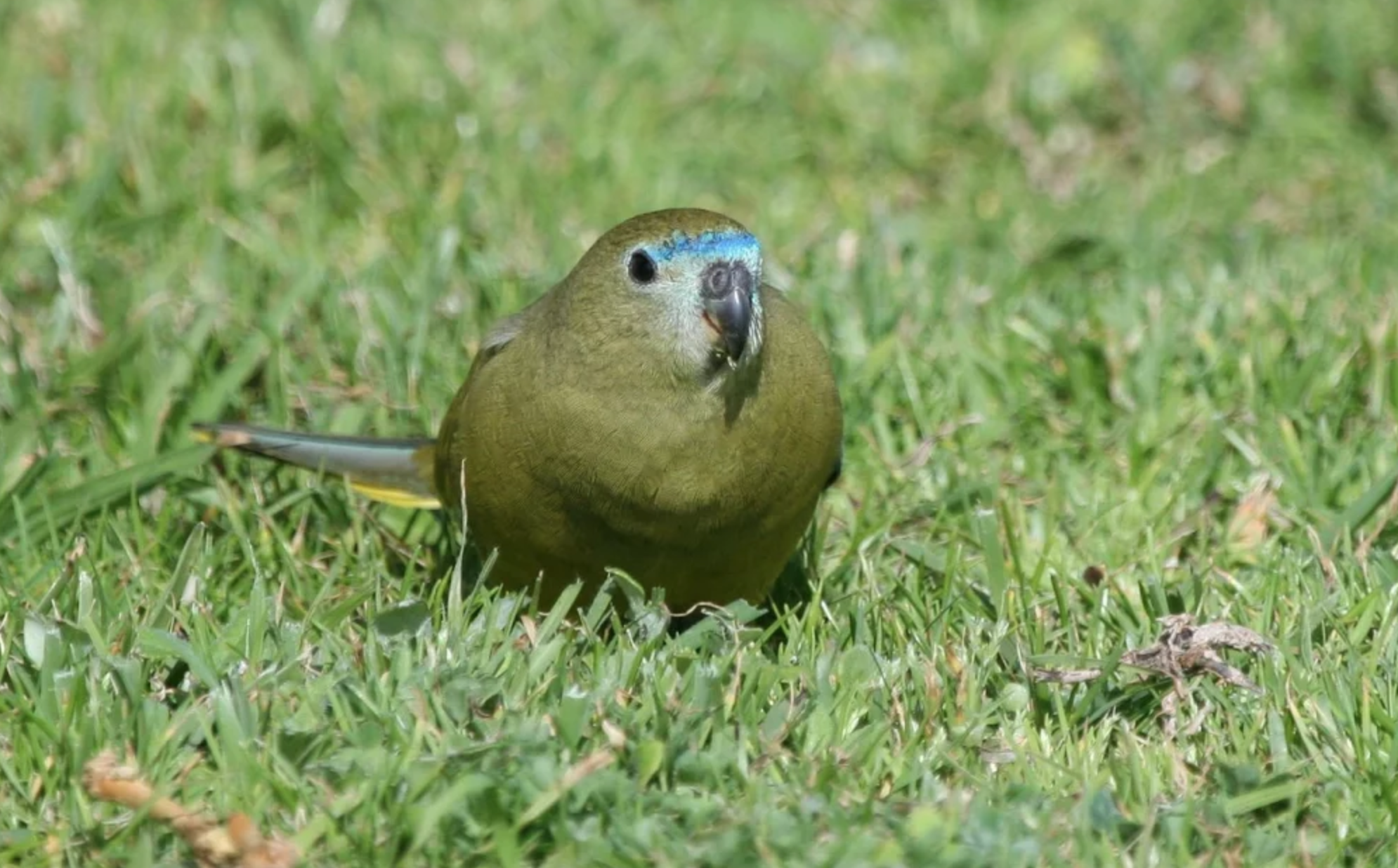
Elegant Parrot, greeny-yellow with two-tone-blue flashes on the wings, seems to be the most widespread and easiest of the neophemas in SA. They mainly roam about the plains and coasts. My first were in the Flinders Ranges on a family long weekend in July 2013, but I have subsequently seen them regularly at various sites around Adelaide, including Pengilly Scrub, Scott Conservation Park, Thompson Beach, the Coorong and Tolderol Game Reserve.
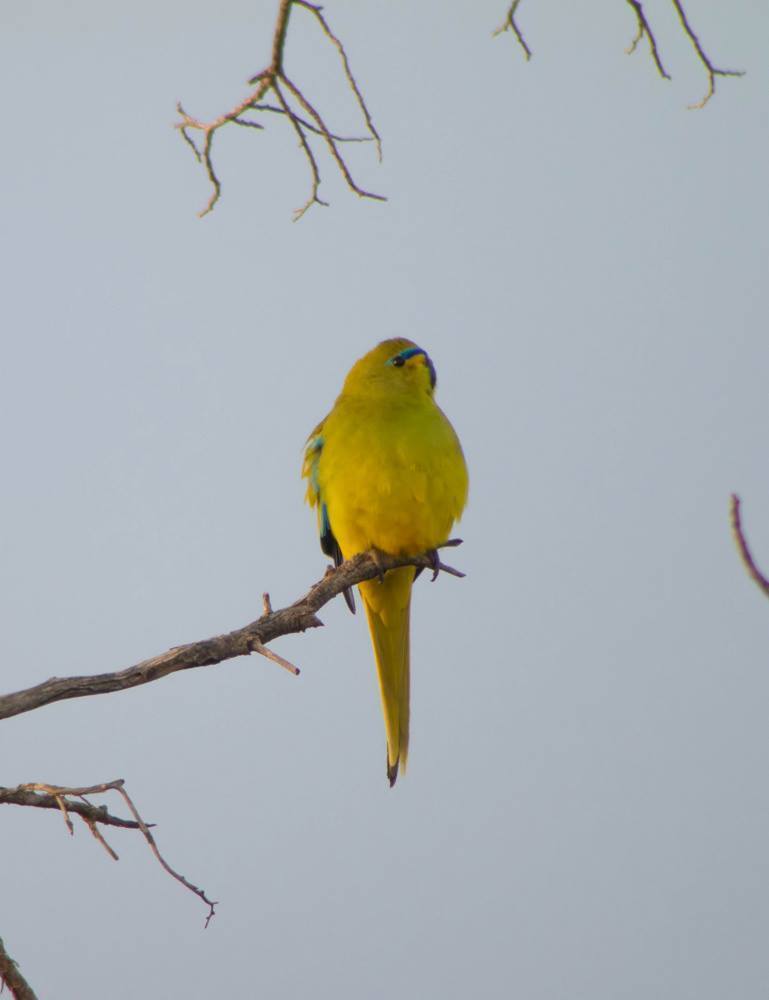
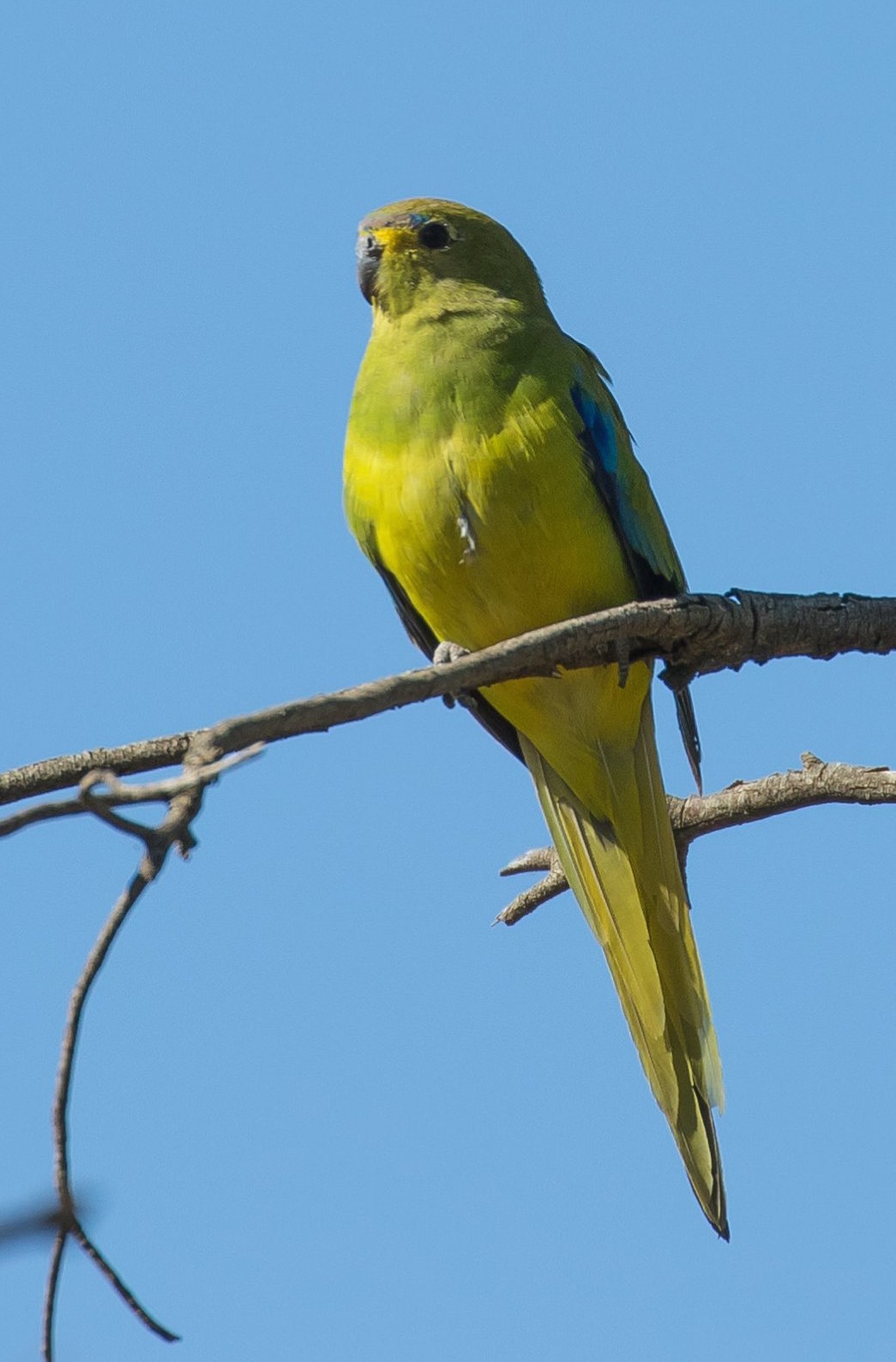

The very similar Blue-winged Parrot was trickier; they seem to be much less common than Elegants around Adelaide, but with the proportions switching down in the south east of the state. My first came at Bool Lagoon in Jan 2015, only scoring birds closer to Adelaide in October 2017 (at Pengilly Scrub). They can be tricky to tell from Elegant, with the key field mark being their larger and uniformly deeper blue-coloured wing patches My only decent photos came in Tasmania on my recent (mid-Dec) trip.
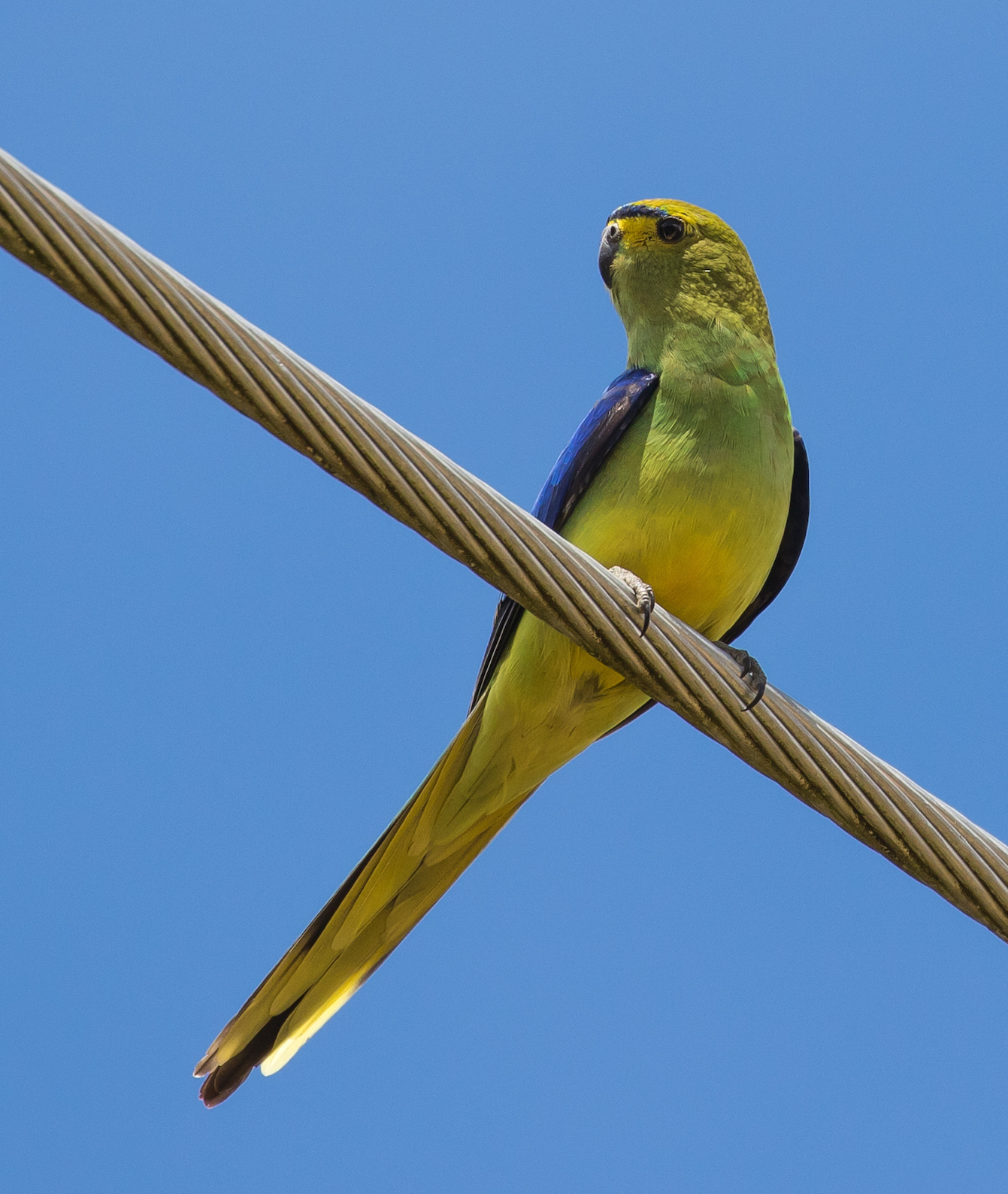
Scarlet-chested Parrot is a bird of the mallee and outback, making a living in dry almost desert-like conditions. It is the gaudiest of the neophemas, sporting an exquisite array of blue, red and yellow on its front bits (interestingly the same as the state colours of SA), and has a rarity value that adds to its allure. When I visited Adelaide for my job interview in September 2011, Peter Waanders had sent me a message to say that SCP were breeding at Gluepot, but at the time I was familiar neither with the acronym (and foolishly didn’t spend the time to work it out), nor the rarity of this event – twitchable Scarlet-chested Parrots used to be a once-in-a-decade event. Consequently I didn’t go for them and realised the error of my ways only after returning to England.
Fortunately the SCPs returned to breed in 2012 and when I found out about this I borrowed a car and headed up to Gluepot at the earliest opportunity, only a couple of months after emigrating! I saw two birds that weekend, male and female, and even managed some (decidedly average) photos. This was the last work my 30D ever did, because it had lost the ability to meter correctly. I was shooting fully manually and making guesses at the requisite exposure. Furthermore I had not yet learnt the value of shooting in raw, so many of the pictures could not be rescued.

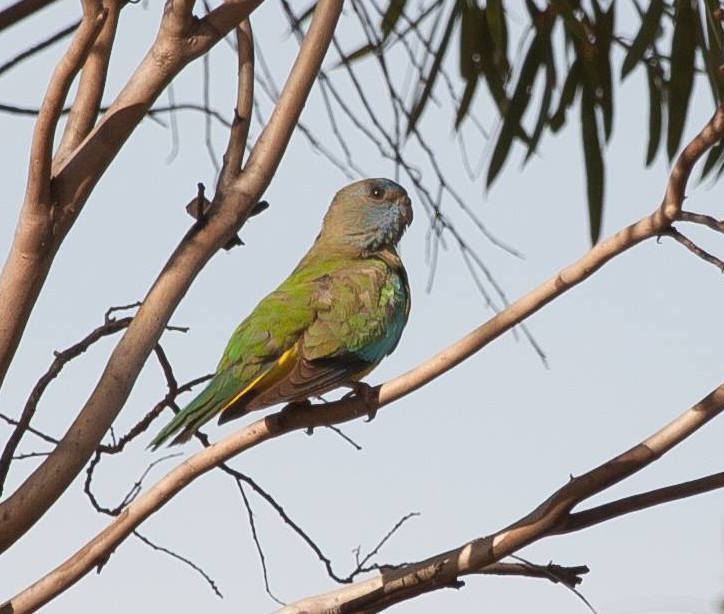
I repeated the twitch a couple of years later. In spring 2016 I found out about a similar breeding event and I drove up and back in a morning. That morning, alone in the mallee, I enjoyed a wonderful 20minutes with a lone male, scoring much better images than I’d managed 3 years previous.

Turquoise Parrot, the one species in the genus not known from SA was, for a while, my nemesis. I tried for it in Capertee Valley (2013), in Chiltern (3 times: Dec 2013, July 2015, July 2016) and in the Warby Ranges (July 2016), dipping on all occasions. It adorns the cover of Dolby and Clarke, gripping me off every time I looked at this otherwise wonderful site guide. In fact this beautiful parrot was thought extinct in the early part of the 20th Century, but gradually recovered and is now believed to have a stable (even growing?) population of around 20,000 birds. I finally caught up with this stunning little parrot at Bimbi State Forest (per an ebird record) while en route to Sydney with the family in April 2017 — see my first blog post, To Sydney and back.
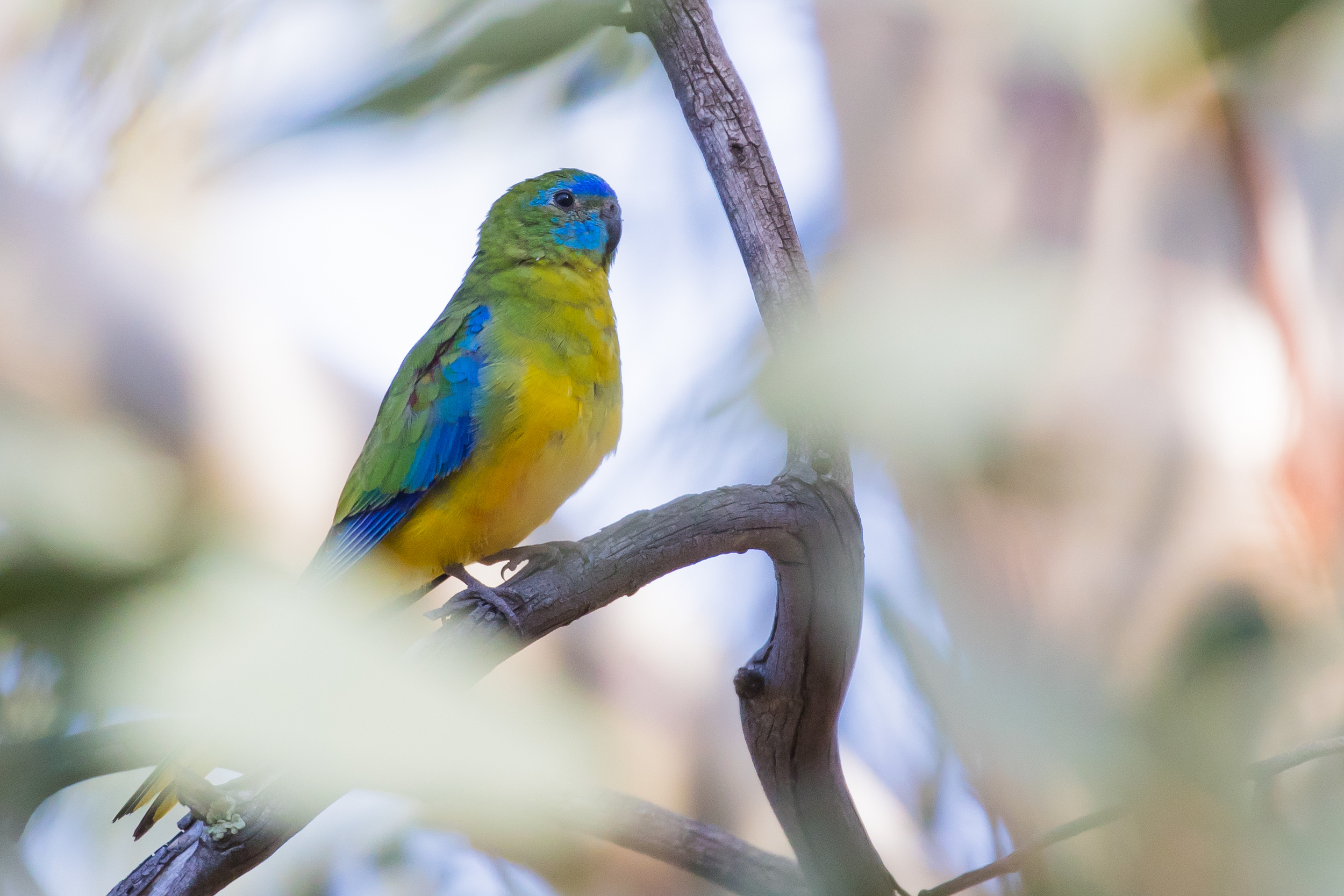


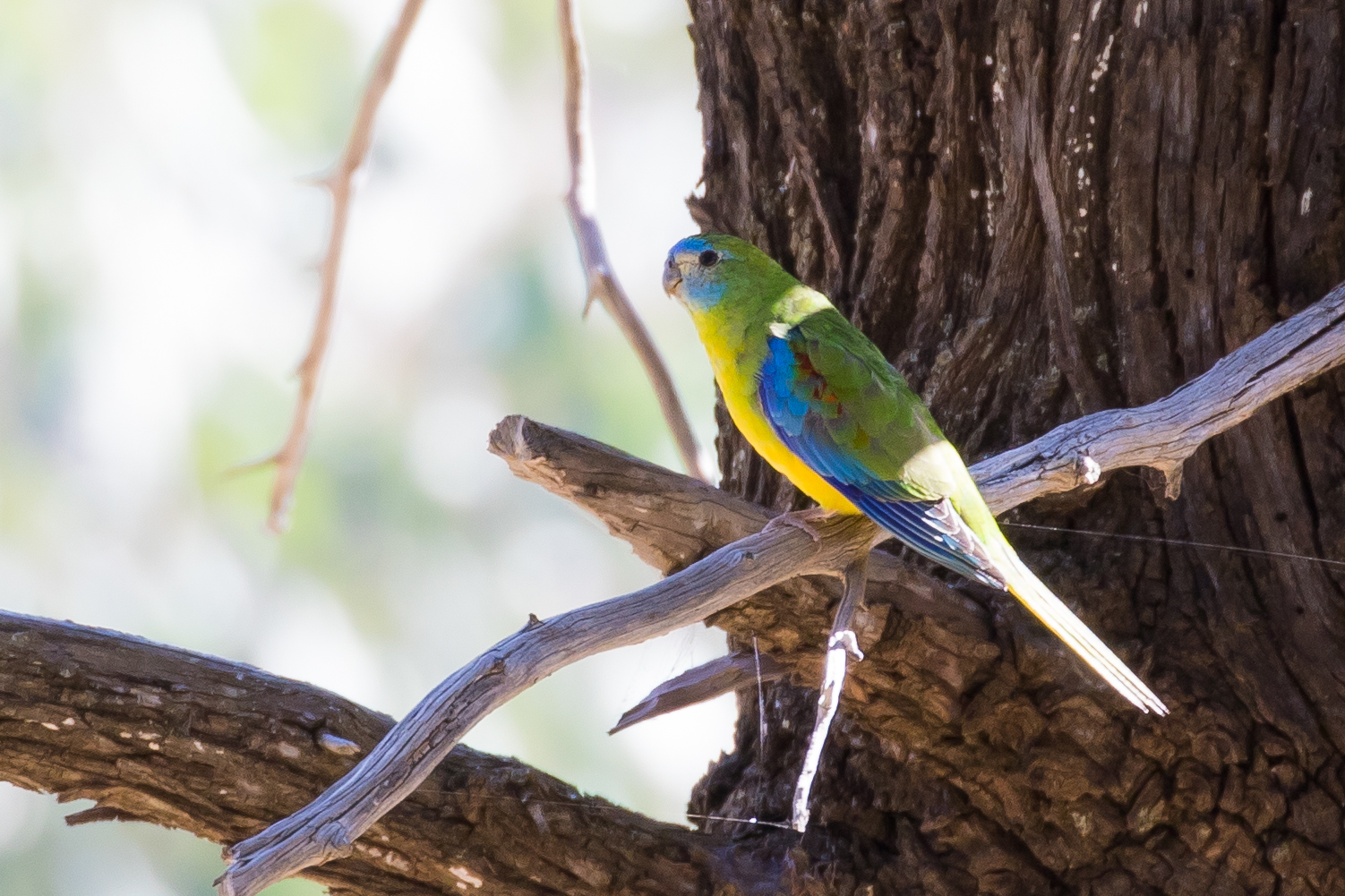
That left just Orange-bellied Parrot a glowing jewel of green, and the rarest of the neophemas. It is one of only two migratory parrots in the world, breeding in Tasmania and crossing Bass Strait in the autumn to over-winter on salt marshes and samphire on the south coasts of Victoria and South Australia. For reasons that are – at best – poorly understood, the population has suffered a dramatic and almost certainly terminal decline. It was already critical in 2012 when I first became aware of it, and the contraction of its winter range as the population shrunk, meant that the last unequivocal SA record predated my arrival (despite extensive, formally coordinated, annual surveys).
A facebook site, “Save the Orange Bellied Parrot” provides updates on the population, breeding success (or otherwise) and news of the measures being taken to try and reverse the decline. The news over the last 5 years has almost invariably been bad, to the point that I realized that 2017 was almost certainly “last chance to see in the wild”. In spring 2017, only 18 birds returned to the only known breeding site at Melaleuca in the wilderness of far south-western Tasmania. Of these, a mere 3 were female. Those numbers mean it is almost certain that 2018 the birds will be functionally extinct in the wild. It is sad and deeply shaming that a rich, first-world country is incapable of protecting its vulnerable wildlife and habitat.
I bit the bullet in November and booked to go in mid-December, realising that this could be my best – maybe only opportunity to see this critically endangered bird. I’ll reserve the full gory details for another blog post about my trip to Tasmania, but the punch-line — as you have probably guessed — is that I managed to see some OBPs, and so complete the set (the full tale of that trip is here).






